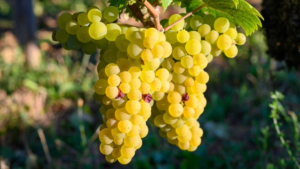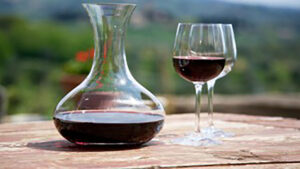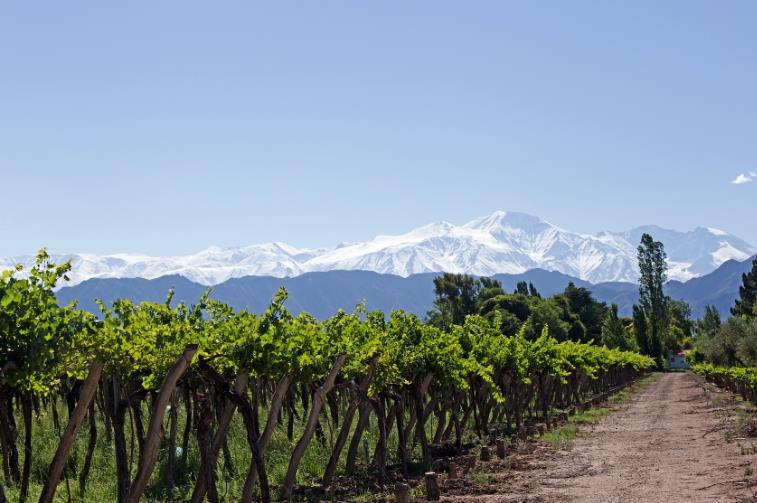
The grass is always greener on the other side…but what about the vineyard? France is undoubtedly one of the most famous winemaking countries in the world, but the mondovino crosses many borders, with many nations making great strides in the range and quality of their wine production. With a whole world to explore, it can be difficult to know where to start, so we’re here to help with our guide to vineyards cultivated beyond the Hexagon.
‘The new world’ is, whilst imperfect as a descriptor, the term ascribed to territories where vineyards have been planted more recently: America, South Africa, and Oceania. You’re unlikely to find native grape varieties in these regions, contrary to what we see in European viniculture. The Mediterranean has been humanity’s chosen spot for vine-growing since the reign of the Roman Empire. Through the ages, grape varieties have been sorted and selected according to their respective yields, characteristics, and adaptation to a given climate. By comparison, the native grape varieties found in the ‘new world’ haven’t undergone this selection process, meaning that the species discovered in these areas haven’t produced such satisfying results. Thus, it is European grape varieties that tend to have been planted, whether this be by colonisers, pioneers in the sector, or alternatively Europeans with a thirst for the taste of home and for new discoveries alike.
To find an interest in the wines of the world is therefore to discover how the grape varieties familiar to us can be adapted and vinified within totally different climatic and geological contexts. It isn’t so surprising that the most well-reputed winemaking families, such as the Drouhin, Rothschild, and Chapoutier clans, have sought to forge their own path through new terrain. The idea of learning the wine trade in South Africa, the USA, or even New Zealand before taking up a domain of one’s own has even become somewhat essential, so much have new winemakers, free from the weight of tradition, embraced a path of innovation.
In this first half of our guide, we’ll take you to the United States, Chile, and Argentina, before discovering South Africa, Australia, and New Zealand in a second edition.
The United States
The history of American viticulture has been plagued with pitfalls. Once they disembarked on the shores of America during the 16th century, the colonisers tried for two centuries to plant European grape varieties in the soil they had appropriated – but in vain. The huge range of temperatures felt on the east coast of the USA does not lend itself well to the successful growth of vines. As well as this, the vine stock brought from Europe was attacked by a mysterious insect: phylloxera. The local grape varieties, their origins being vitis lambrusca rather than vitis vinifera, resisted this blight. However, the wines produced were too unpleasant, and Thomas Jefferson’s dream of creating a fine, American wine was slipping away.
Prohibition – a constitutional ban on the production, importation, and sale of alcohol from 1920 to 1933 in the USA – was the nail in the coffin for American wine, which at that point had not committed to either the vinifera or lambrusca varieties, often blending the two. It was only in the 1960s, with the drive of such wine personalities as Robert Mondavi, that America’s wine industry really found its feet. European grape varieties were introduced and grafted onto American root stock, which was particularly the case for Cabernet Sauvignon, Merlot, and Zinfandel. This was attempted in numerous states, but it was the west coast, mainly California, Oregon, and Washington, that saw the most successful results. In 1976, an important blind tasting event judged American wines among the best in the world, in competition with the traditional European vineyards, thus confirming the USA’s place as a global stakeholder in the wine industry.
In the USA there is an appellation system that is supposed to resemble the French AOCs and Italian DOCs, and this is referred to as AVA (American Viticultural Area). In practice, it is more like the IGP system. The requirements are relatively flexible, and just 85% of the grapes in a given cuvée must come from the area in question in order for the wine to receive the AVA label. Generally, these AVA zones don’t regulate the use of one grape variety or another. In order for it to be stated on the label, the wine must be composed of over 75% of the grape variety mentioned.
Wines from California
90% of the wine produced in the USA comes from California! Two large viticultural regions share much of America’s wine production, these being the Sonoma Valley and the Napa Valley. Two rivers run parallel to each other, both finding their way to San Pablo Bay in San Francisco.
The Sonoma Valley is less well-known than its Napa counterpart. Numerous grape varieties are planted here, the most widespread being Chardonnay (in cooler climates) and Sauvignon. For the production of red wine, the most heavily planted grape is Pinot Noir, followed by Merlot, Cabernet Sauvignon, and Zinfandel. This latter variety is right at home in California. The Pinot Noir grown here is stronger in colour and richer than that found in Oregon. The Marcassin domain creates superb Chardonnay and Pinot Noir cuvées.
The Napa Valley is the foreign terroir of choice for Bordeaux grape varieties, particularly Cabernet Sauvignon. Zinfandel can also be found here. Chardonnay and Sauvignon are grown for the production of white wine, though this is not made as widely. The climate is hot but tempered by the presence of San Pablo Bay to the north. We should note that irrigation is allowed in this region, meaning that extra water can be added to vines as they grow; this is a controversial topic in winemaking, as irrigation can lead to higher production levels with lower quality. Some winemakers use French barrels for maturation, whilst others use casks produced in America, often conferring coconut aromas to the resulting wine.
Among the best producers, we have to cite Screaming Eagle, Grown Bryant Winery, Spottswoode, Abreu, and wines by Robert Mondavi (even if the range is broad and the quality quite heterogenous), without forgetting Opus One, a collaboration between the Rothschild and Mondavi families.
Just to the south of Oakland, opposite San Francisco, the stunning Santa Cruz mountains stretch as far as the eye can see. This is a smaller region of producers like Monte Bello and Bony Doon where superb wines are created from Rhône Valley grape varieties. And another domain worthy of a mention is Ojai, which is situated a little further south, just north of Los Angeles.
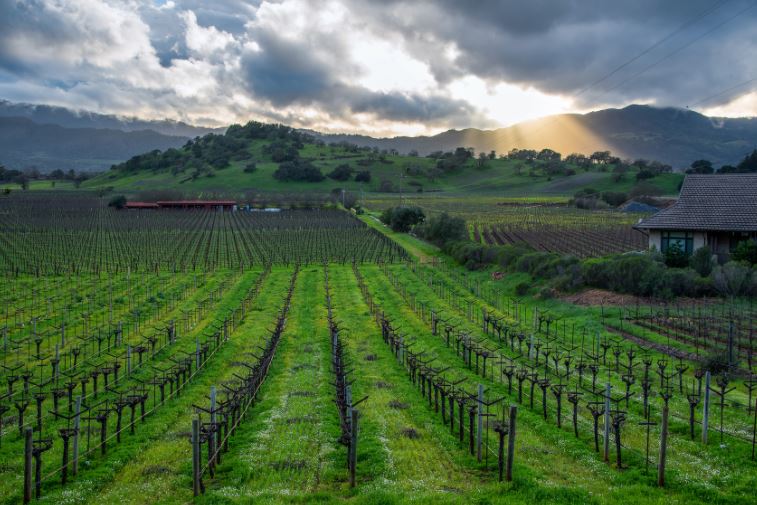
Wines from Oregon
Like Bordeaux and the northern Rhône Valley, Oregon is situated on the 45th parallel north – a circle of latitude that is 45 degrees north of the Earth’s equator. You might recognise this from Jaboulet’s Parallèle 45 cuvée. The Oregon region has just 10,000 hectares of vines in all, the equivalent of Beaujolais. Yet it is here that we find the USA’s most beautiful expression of Pinot Noir. The Pinots produced here are much deeper in colour than those of Burgundy, though they don’t come close to the shades of Californian cuvées. On the palate, these wines are generally rounder and marked by a light sugariness. Most of the white wines are made from Pinot Gris. Unlike in California, the vineyards here are separated between numerous producers. The AVA requirements are more restrictive here, where 100% of the grapes must come from Oregon.
Some of this region’s best producers are Drouhin, Louis Jadot, Liger-Belair and Méo-Camuzet, who have travelled to the USA in order to share their savoir-faire.
Note that there are some superb Riesling producers in the state of Washington, where the temperature is propitious for this grape variety.
See the American wines for sale at iDealwine

Chile
Whilst the American colonisers failed to plant vitis vinifera, the Conquistadors had more luck. Chile is one of the only winemaking regions in the world to never have been affected by the phylloxera disease…the plants attacked in North America gave superb results in the South. Chile is a band of land, 4000 kilometres in length, situated between the Pacific Ocean and the Andes. Its vineyards are mainly located in the centre, between Santiago to the north and the Maule region to the south. Hot days followed by fresh nights give very interesting balances for both the reds and whites. The vineyards are irrigated by the melting snow from the Andes. What separates this region from the rest of the world is its relative isolation in terms of vegetal material. There are still some direct descendants of the plants brought by the first Spanish colonisers (such as Sauvignon), though the vines are ‘globalising’. Producers can import European plants, so long as they respect strict quarantine regulations. This has been undertaken perhaps most notably by the team from Lafite in Los Vascos.
Chile is recognised mainly for its red wines. The Cabernet Sauvignon grown here gives superb results and is the most widely planted variety (1/3 of vine land), followed by Chardonnay and Sauvignon (blanc, gris, and even vert). The Carmenère grape has slowly replaced Merlot. A very late and productive grape, it leads to excellent production in Chili on very poor soil. In some ways it has become the country’s flagship grape variety.
See the Chilean wines for sale at iDealwine
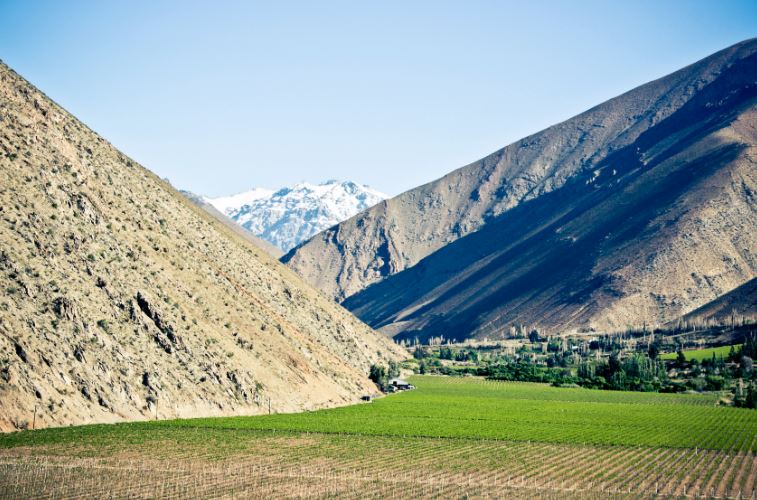
Argentina
This vast viticultural region is separated from Chile by the Andes. The climate is extremely dry during the summer with practically no rain whatsoever. Plants can only be grown with the help of irrigation in the form of melted snow from the nearby mountains. The vineyards are located at high altitude of more than 1000 metres. The very cold nights confer a lovely acidity to the vines.
The principal grape variety here is clearly Malbec, which is then brought together with Cabernet Sauvignon, Cabernet Franc, Carmenère, Merlot, and Tempranillo. Malbec produces structured wines that have strong alcohol levels but are balanced by a marked acidity. The resulting wines are fruity with aromas of candied blackcurrant and blackberry.
For the white wines, you’ll find mainly Pedro Gimenez grapes (from Spain, but not to be confused with Pedro Ximenez), classic European grapes (Chardonnay, Viognier, Chenin, Sauvignon) and what’s locally known as Torrontés (a cross between Muscat of Alexandria and Criolla Chica).
Among iDealwine’s Argentinian favourites are the domains of Atamsique and El Enemigo.
See the Argentinian wines for sale at iDealwine


